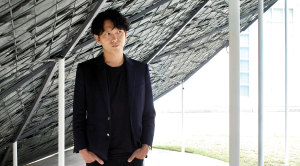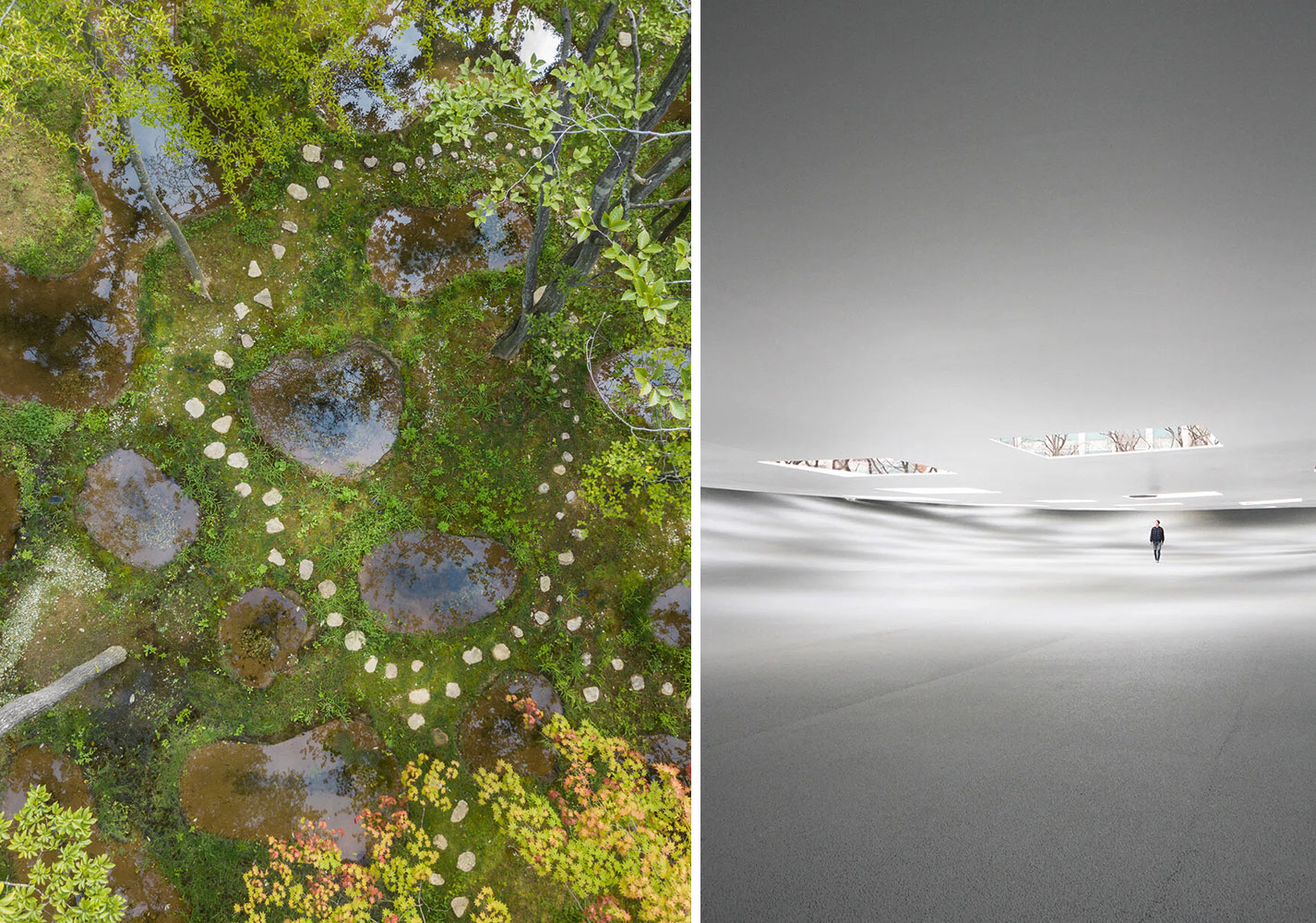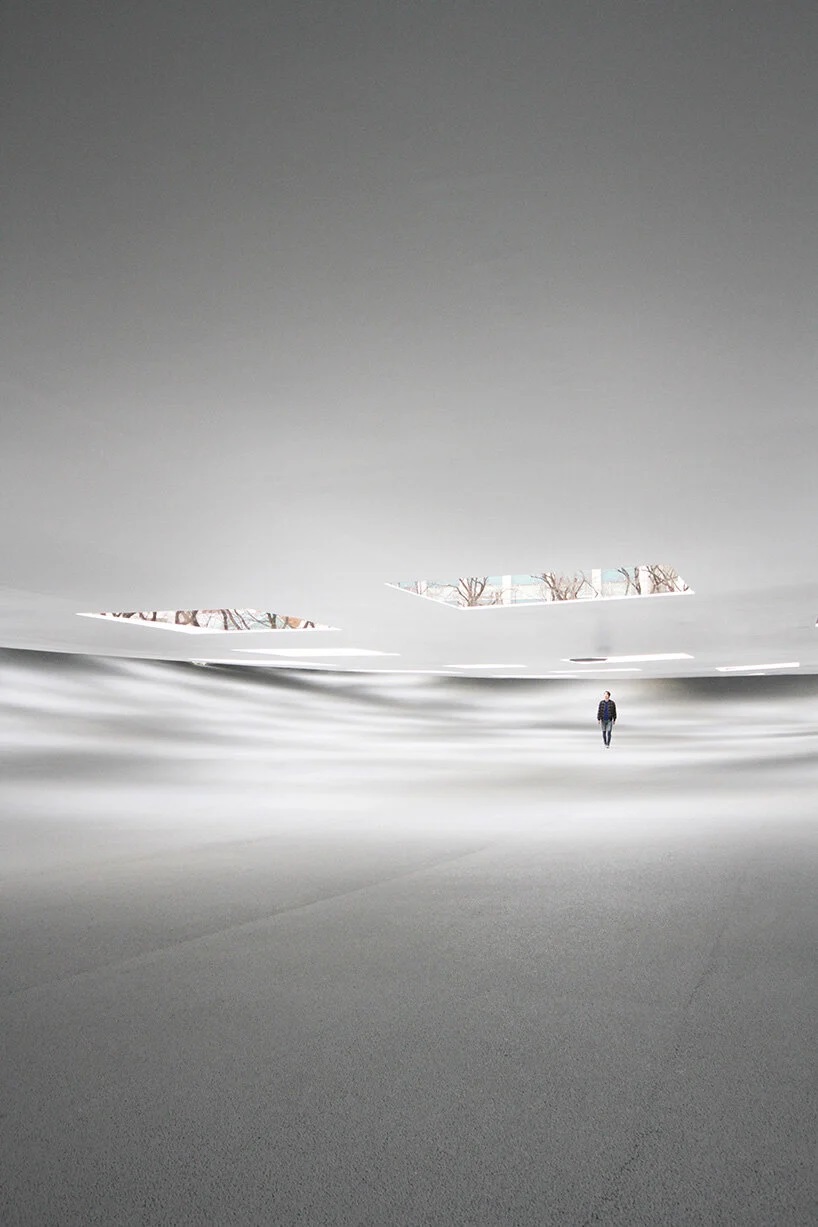ARCHITECTURE:Junya Ishigami
 Junya Ishigami (10/3/1974- ) is one of the most outstanding young Japanese architects of present time and he has obtained recognition due to his experimental approach of the project development. Sensitive to the specific local features, Ishigami puts, at the heart of the debate, key architectural issues that sometimes might be abandoned in the daily practice. Time, tension and freedom are concepts that are always present in his production somehow, becoming more visible in most of his recent works.
Junya Ishigami (10/3/1974- ) is one of the most outstanding young Japanese architects of present time and he has obtained recognition due to his experimental approach of the project development. Sensitive to the specific local features, Ishigami puts, at the heart of the debate, key architectural issues that sometimes might be abandoned in the daily practice. Time, tension and freedom are concepts that are always present in his production somehow, becoming more visible in most of his recent works.
By Efi Michalarou
 Junya Ishigami acquired his master’s degree in architecture and planning at Tokyo National University of Fine Arts and Music in 2000. He worked with Kazuyo Sejima from 2000 to 2004 at SANAA, before establishing his own firm in 2004: junya.ishigami+associates. Ishigami showed solo in the Japanese pavilion at the 11th Venice Architecture Biennale in 2008; and was the youngest ever recipient of the Architectural Institute of Japan Prize for the Kanagawa Institute of Technology KAIT Workshop in 2009. In 2010 he won the Golden Lion for Best Project at the 12th Venice Architecture Biennale, and became an associate professor at Tohoku University in Japan. The same year, his innovative integration of context’s complexity to his projects led him to win a Global Award for Sustainable Architecture. In 2014 he was made the Kenzo Tange Design Critic at the Harvard Graduate School of Design in the US. Now he has got an Atelier at the Accademia di Architettura di Mendrisio. He was the subject of a major and critically acclaimed solo exhibition at the Fondation Cartier pour l’art contemporain in 2018 that traveled to the Power Station of art in Shanghai later in 2019. Ishigami is the second-youngest designer of the Serpentine Pavilion, and his work is known for a light and ephemeral approach. The design for the 2019 pavilion takes the form of a slate sheet rising from the landscape of the park, held up by pilotis that form an interior field. He is known for designs with dream-like qualities that incorporate the natural world, such as landscapes, forests and clouds, in an architectural practice that places humankind as part of nature. Junya Ishigami believes there are many differences between conventional architecture, as an artificial environment, and the natural environment, different forms and systems, different degrees of diversity, and different times. Yet the most fundamental difference of them all is scale, from subatomic particles, insects and animals, and the human world, to the global scale and even the incomprehensible vastness beyond our planet. In this book, Ishigami poses questions about how to bring this entire spectrum of scales into the realm of architecture, expanding its concept to embrace fluctuation and vagueness through five themes: Clouds, Forest, Horizon, Sky, Rain. Ishigami considers the surrounding environment as an integral part of each and every architectural project. He incorporates the landscape in his work, always magnifying it, even transforming it, as with a newly constructed lake in Rizhao, China, designed as the site for a one-kilometer long promenade building in Rizhao, China, and a forest project in Tochigi, Japan, with more than three hundred trees moved from their existing site and replanted on a neighboring plot of land.
Junya Ishigami acquired his master’s degree in architecture and planning at Tokyo National University of Fine Arts and Music in 2000. He worked with Kazuyo Sejima from 2000 to 2004 at SANAA, before establishing his own firm in 2004: junya.ishigami+associates. Ishigami showed solo in the Japanese pavilion at the 11th Venice Architecture Biennale in 2008; and was the youngest ever recipient of the Architectural Institute of Japan Prize for the Kanagawa Institute of Technology KAIT Workshop in 2009. In 2010 he won the Golden Lion for Best Project at the 12th Venice Architecture Biennale, and became an associate professor at Tohoku University in Japan. The same year, his innovative integration of context’s complexity to his projects led him to win a Global Award for Sustainable Architecture. In 2014 he was made the Kenzo Tange Design Critic at the Harvard Graduate School of Design in the US. Now he has got an Atelier at the Accademia di Architettura di Mendrisio. He was the subject of a major and critically acclaimed solo exhibition at the Fondation Cartier pour l’art contemporain in 2018 that traveled to the Power Station of art in Shanghai later in 2019. Ishigami is the second-youngest designer of the Serpentine Pavilion, and his work is known for a light and ephemeral approach. The design for the 2019 pavilion takes the form of a slate sheet rising from the landscape of the park, held up by pilotis that form an interior field. He is known for designs with dream-like qualities that incorporate the natural world, such as landscapes, forests and clouds, in an architectural practice that places humankind as part of nature. Junya Ishigami believes there are many differences between conventional architecture, as an artificial environment, and the natural environment, different forms and systems, different degrees of diversity, and different times. Yet the most fundamental difference of them all is scale, from subatomic particles, insects and animals, and the human world, to the global scale and even the incomprehensible vastness beyond our planet. In this book, Ishigami poses questions about how to bring this entire spectrum of scales into the realm of architecture, expanding its concept to embrace fluctuation and vagueness through five themes: Clouds, Forest, Horizon, Sky, Rain. Ishigami considers the surrounding environment as an integral part of each and every architectural project. He incorporates the landscape in his work, always magnifying it, even transforming it, as with a newly constructed lake in Rizhao, China, designed as the site for a one-kilometer long promenade building in Rizhao, China, and a forest project in Tochigi, Japan, with more than three hundred trees moved from their existing site and replanted on a neighboring plot of land.












